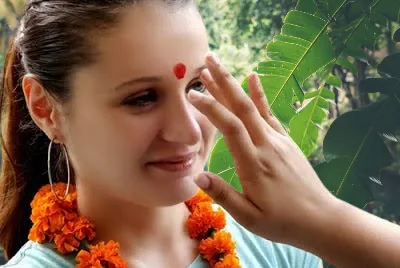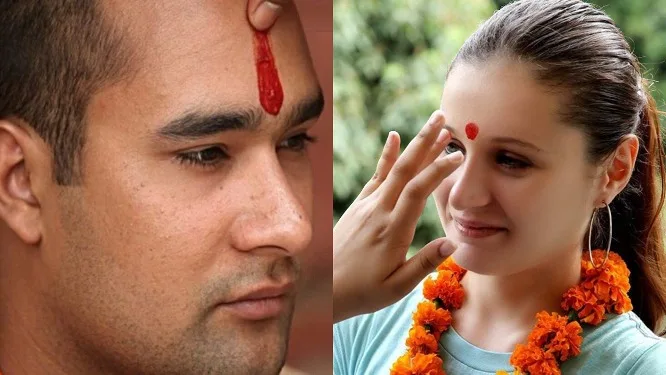In the rich tapestry of Indian culture, one cannot help but be captivated by the intricate traditions and rituals that have been passed down through generations. Among these customs, the practice of adorning the forehead with tattoos holds a profound significance, reflecting a harmonious blend of spirituality, tradition, and aesthetics.
The tradition of forehead tattoos, known as “Bindi” or “Tilaka,” has deep roots in Hinduism, where it serves as a symbol of spiritual awakening and connection to the divine. The term “Bindi” is derived from the Sanskrit word “Bindu,” meaning a point or dot. This small yet powerful mark is placed on the forehead, between the eyebrows, often at the site of the “ajna chakra” or the third eye.
One of the primary reasons behind the forehead tattoo tradition is its association with the third eye, a mystical concept prevalent in Hinduism. The third eye is believed to be a gateway to higher consciousness and spiritual insight. By placing a Bindi on this point, individuals aim to enhance their focus during meditation and channel their inner energy towards spiritual growth.
The forehead tattoo is not only a spiritual symbol but also a cultural identifier. Different communities and sects within Hinduism may have distinct styles and colors of Bindis, each carrying its unique cultural connotations. For example, a red Bindi is often associated with married women, symbolizing prosperity and marital bliss, while a black Bindi may be worn as a protective charm against negative energies.

Beyond its spiritual and cultural significance, the Bindi has evolved into a fashion statement and a form of self-expression. In contemporary India, Bindis come in various shapes, sizes, and designs, reflecting the diversity and dynamism of the country. Modern interpretations of the forehead tattoo transcend religious boundaries and are embraced by people of different faiths and backgrounds.
It’s important to note that forehead tattoos are not exclusive to women; men also participate in this cultural tradition. The Tilaka, a sacred mark made with sandalwood paste or sacred ash, is often worn by men during religious ceremonies. The Tilaka signifies purity, auspiciousness, and devotion.
Read also:Unveiling the Roma Marriage Market : A Digital Frontier Emerges
While the forehead tattoo tradition has deep historical roots, it is not static; it has adapted and evolved over time. Today, Bindis are not only worn during religious ceremonies but have become a regular accessory in daily life. From traditional ceremonies to Bollywood red carpets, the Bindi has found its place as a symbol of cultural pride and identity.
In conclusion, the tradition of tattooing the forehead in Indian culture is a multifaceted practice that weaves together spirituality, cultural identity, and personal expression. Beyond its aesthetic appeal, the forehead tattoo serves as a visual representation of the profound connections between the individual and the divine, embodying the rich tapestry of India’s cultural heritage.


